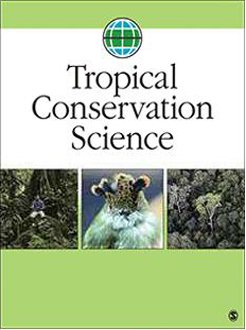Andiroba (Carapa guianensis) is a multiple-use tree species that plays a crucial socioeconomic role across thousands of Amazonian traditional and indigenous communities. In the floodplain forests of the Amazon estuary, we partnered with local forest managers to investigate C. guianensis ecological parameters, addressing seed production rates, tree density, and size class structure across a range of environmental conditions and forest use history. C. guianensis population structure was measured in three forest types: baixio, restinga, and terra preta, differentiated by tidal influence, species dominance and composition, and edaphic conditions. We found significant differences across forest types, whereby seedling and sapling densities were higher in terra preta and adult densities were higher in baixio. Adult densities were 28.7, 23.0, and 19.5 trees/ha, and seedling densities were 22.9, 105, and 151 trees/ha in baixio, restinga, and terra preta forest types, respectively. Seed production rates varied significantly across forest types, year, size class, crown form, and crown illumination. There were higher numbers of viable seeds in terra preta versus baixio (5.5 kg and 2.6 seeds/tree/year, respectively) as well as more trees with better crown forms, more light, and larger diameter sizes. Long-term patterns of community timber management intensity by forest type significantly influenced both population structure and population-level seed production. Nonetheless, assessment of seed production for the total population suggests that the local community was collecting less than 1% of the viable C. guianensis seeds produced annually within community forest lands. This study illustrates the potential of management to impact the sustainability of an important multiple use species and shows the impact that community conservation planning and action can have on future natural resource availability.
How to translate text using browser tools
1 January 2020
Population Structure and Fruit Production of Carapa guianensis (Andiroba) in Amazonian Floodplain Forests Implications for Community-Based Management
Marina Londres,
Mark Schulze,
Christina L. Staudhammer,
Karen A. Kainer

Tropical Conservation Science
Vol. 10 • No. 1
March 2017
Vol. 10 • No. 1
March 2017
amazon estuary
forest-based livelihoods
nontimber forest products
sustainable use
timber




